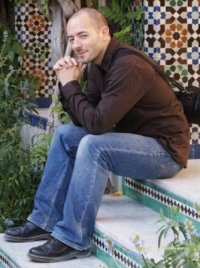On awakening of the desire to seek the way, I visited Buddhist masters in
all parts of the country. Finally I met Zenko (Myozen, disciple of Eisai) at
Kennin temple. The nine years that If served as his follower passed quickly.
From him I heard about the Rinzai style. Zenko, as the leading disciple of
Eisai, truly transmitted the highest Buddhism. Other disciples could not compare
with him. I also went to China, visited Zen masters of both Cheh-chiang
(Chekiang, formerly divided into east and west), and heard about the styles of
the five schools. Finally I studied with Zen master Ju-sting (Nyojo) on Ta-p'ein
(Taihaku) peak. In this was I completed the valuable training for my life. After
that at the beginning of the Shotei period (1227), I returned to Japan. Because
I had the idea of spreading the Law and saving all beings, I was like a man
carrying a heavy burden. Then I thought of abandoning this idea of spreading the
Law and wait for a more propitious time. I wandered here and there for some time
sincerely trying to teach the style of the former Zen master. There are true
trainees who deliberately shun fame and profit and concentrate on the search for
the way. But unfortunately they are misled by false masters, so real
understanding is veiled and the trainees uselessly become drunk with self-
madness and drown for long years in the world of delusion. How can the right
seed of wisdom sprout and the chance for enlightenment be grasped? I am now
wandering here and there like a cloud or water grass - what mountain or river
shall I visit? Because I sympathize with such seekers, I went to China, saw the
form and style of the monasteries, and received the essence of the Zen teaching.
Gathering and recording all this, I am leaving it for the trainees so that they
may be helped toward knowing the essence of Buddhism.
Interpretation
This is a straightforward summary of Dogen's personal quest to understand true Buddhism and spread it in Japan.
Text
Isn't this the core of Zen? Buddha Sakyamuni transmitted the right law to
Mahakasyapa on Grdhrakuta Mountain, and a long line of patriarchs handed it down
to Bodhidharma. And Bodhidharma went to China and transmitted the right law to
Hui-k'o (Eka).
This started the transmission of Zen
Buddhism to the East. Transmitted thus in its essential purity, it came down by
a natural route to the Sixth Patriarch, Hui-neng. At this time true Buddhism was
transmitted to China, and it expressed a meaning free from trivialities. The
Sixth Patriarch had two outstanding disciples- Nan-yueh Huai-jang and
Ch'ing-yuan Hsing-ssu. Together they transmitted the Buddha seal; they were
leaders of man and heaven. These two schools spread, and five styles of Zen
appeared. They were the schools of Fa-yen, Wei-yang, Ts'ao-tung, Yun-men, and
Lin-chi. In present-day China only the Lin-chi (Rinzai) school is flourishing.
Although the five schools differ, they are all based on the single seal of the
Buddha Mind. From the later Han period to the present in China, the scriptures
of the other teachings were propagated, but it was impossible to determine which
was best. With the coming of Bodhidharma from India the root of the conflict was
abruptly cut, and pure Buddhism spread. We must also try to do the same in our
country. All the Buddhas and patriarchs who transmitted Buddhism considered
sitting and practicing self-joyous meditation the true way of enlightenment. The
enlightened ones in both the East and West followed this style. This is because
the masters and their disciples correctly transmitted this superior method from
person to person and received the uncorrupted truth.
Interpretation
Dogen is describing the transmission of awakening from Shakyamuni Buddha to his present day and the history of the Zen schools. He also describes 'self-joyous' meditation as the way of enlightenment.

No comments:
Post a Comment